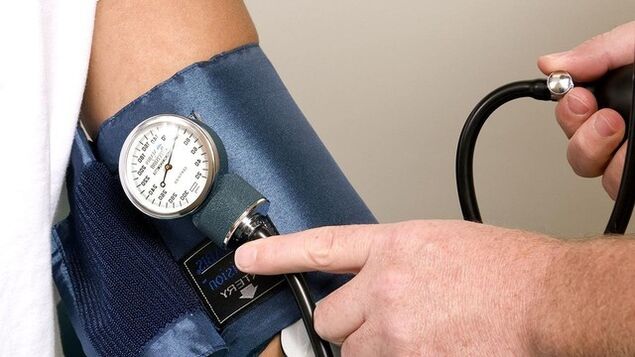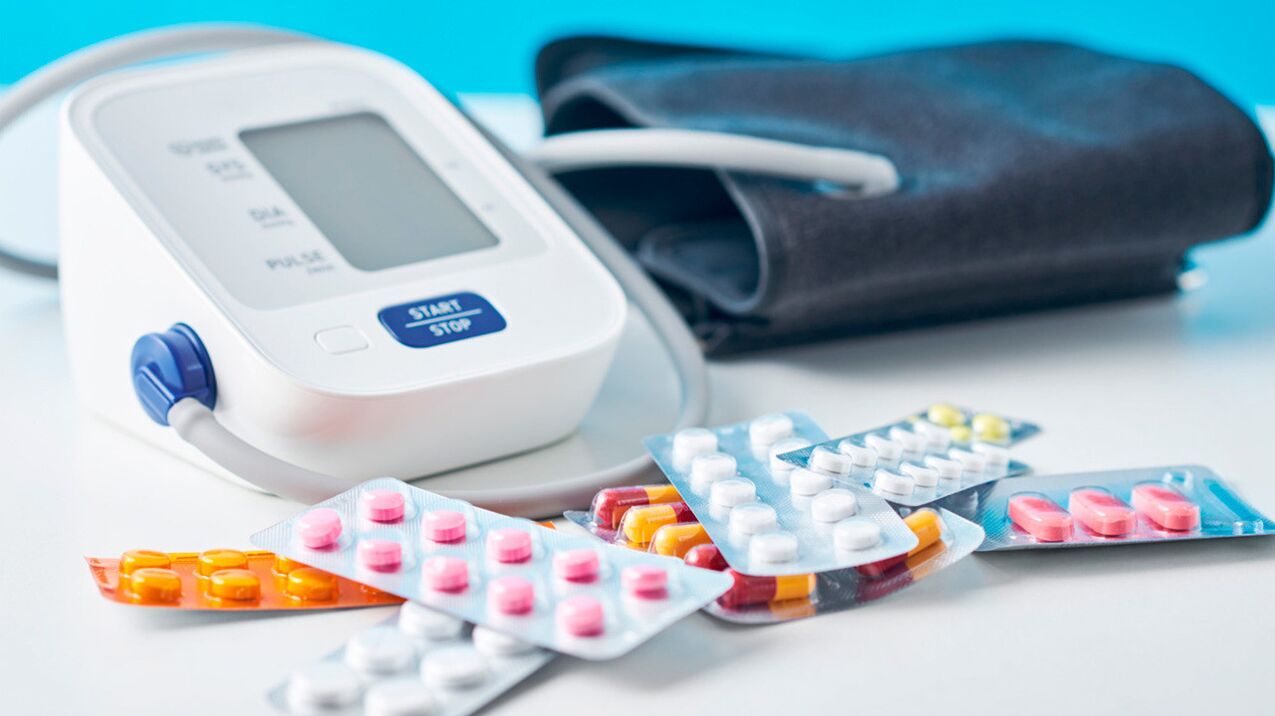
What is high blood pressure?
Causes and risk factors
- main (required)High blood pressure is more common – According to various estimates, high blood pressure is more common in 85-95% of cases. Its appearance is independent of concomitant diseases; stress increases under the influence of various factors;
- Secondary (symptomatic)The incidence of hypertension is 5-15%. In this case, hypertension is one of the symptoms that may be associated with endocrine disorders, kidney disease, and macrovascular abnormalities.
- Being overweight (obesity);
- Inactivity, lack of physical activity, lack of physical activity;
- drinking and smoking;
- Stress, ongoing emotional tension;
- Lack of sleep, its poor quality, insomnia;
- excessive salt intake;
- Improper sleeping and resting patterns (including due to irregular or long working hours);
- changes in hormonal levels (in women, may be related to the use of oral contraceptive pills and the onset of menopause);
- genetic factors (in total, more than 20 genes have been identified as determining susceptibility to hypertension);
- Over 65 years old (young people can also develop the disease, and blood pressure should be monitored regularly after the age of 35);
- Malnutrition (a diet lacking in vegetables and fruits and excessive intake of foods high in trans fats and saturated fats);
- Kidney disease, diabetes and several other related conditions and diseases.
Classification
first level
second degree
Three degrees
| arterial pressure | Systolic blood pressure (mmHg) | Diastolic blood pressure (mmHg) |
|---|---|---|
| beautiful | < 130 | < 85 |
| Often, what is called prehypertension | 130–139 | 85–89 |
| 1 - Mild hypertension | 140–159 | 90–99 |
| 2 - Moderate hypertension | 160–179 | 100–109 |
| 3 - Severe hypertension | ≥180 | ≥110 |
stages of hypertension
- The first stage:Moderate hypertension. Blood pressure is unstable and may fluctuate throughout the day. During this stage, the condition of the internal organs and central nervous system remains normal, with no signs of organic damage. Hypertensive crises occur rarely and are relatively mild.
- second stage:Severe hypertension. In the second stage, blood pressure rises significantly, health conditions often worsen, and hypertensive crises become severe. During this stage, changes in internal organs begin to occur due to ongoing high blood pressure. Vascular disease occurs and the blood supply to the brain deteriorates. Narrowing of retinal arteries. Enlargement of the left ventricle of the heart, which increases the risk of serious heart disease. Signs of renal dysfunction (increased albumin levels in urine, elevated creatinine levels in serum)
- The third phase:Very severe high blood pressure. Blood pressure becomes very high - over 200 mmHg. Art. Systolic blood pressure and 125 mmHg. Art. for diastolic blood pressure. Organic diseases worsen, and serious diseases such as heart failure, cerebrovascular thrombosis, aneurysm, and renal failure occur. Severe hypertensive crises often occur.
symptom
diagnosis
- Blood pressure measurement.This is done every few hours or 2-3 days to determine the degree and stage of high blood pressure;
- Determine the cause of the disease.It is important to determine whether hypertension is primary or secondary (caused by another condition). In the second case, special treatment may be needed;
- Monitor general health.During the examination, the condition of the heart, cerebral blood vessels, fundus of the eyes, and kidneys are monitored. Due to high blood pressure, the function of these organs is impaired. When diagnosing, it is important to assess their condition.
- Blood pressure measurement.Take multiple measurements at rest (excluding physical activity, caffeine consumption, smoking half an hour before measurement) and at different times of the day;
- ordinary inspection:Measure height, weight, waist circumference, palpate abdomen, assess peripheral arterial pulse;
- Urinalysis.Albumin and creatinine levels are important - deviations from normal values indicate renal dysfunction and require ultrasound;
- blood analysisTo monitor potassium, creatinine, and blood lipid levels, an ultrasound of the kidneys is performed. Assessment of serum lipid levels is needed to control lipid metabolism to eliminate the risk of cardiovascular system complications;
- electrocardiogramIt is performed when left ventricular hypertrophy is detected to monitor the condition of the heart.

Treatment of high blood pressure
- quit smoking;
- Refusing to drink alcohol or strictly limiting alcohol consumption;
- Diet: Adjust your diet, reduce salt intake (less than 3. 75 grams per day), increase the amount of vegetables and fruits (preferably 5 servings per day), and limit the calorie intake of whole wheat, dairy products, low-fat products, etc. limited. If there are no contraindications or kidney disease, increase the intake of potassium-containing foods (spinach, beans, pumpkin, fish, milk, kefir, yogurt, etc. );
- Increase physical activity. Moderate exercise is recommended to promote weight loss and strengthen the cardiovascular system.
- Adrenergic modulators.They reduce sympathetic nervous system activity and lower blood pressure, but can cause drowsiness and drowsiness and are therefore rarely used;
- ACE inhibitors.Reduce peripheral vascular resistance, often used in patients with diabetes;
- Angiotensin II receptor blockers.They work similarly to ACE inhibitors and are not prescribed with them. Not prescribed during pregnancy;
- Beta blockers.Lower blood pressure by slowing heart rate;
- Calcium channel blockers.They reduce total peripheral vascular resistance and may cause reflex tachycardia;
- Direct vasodilator.They have a direct effect on blood vessels and are used to treat severe hypertension;
- Diuretics.They reduce plasma volume, thereby lowering blood pressure, but can also cause hyperkalemia.
important!The therapist or cardiologist should prescribe the medication and its dosage after examination. Taking medications without a doctor's prescription can be dangerous.























